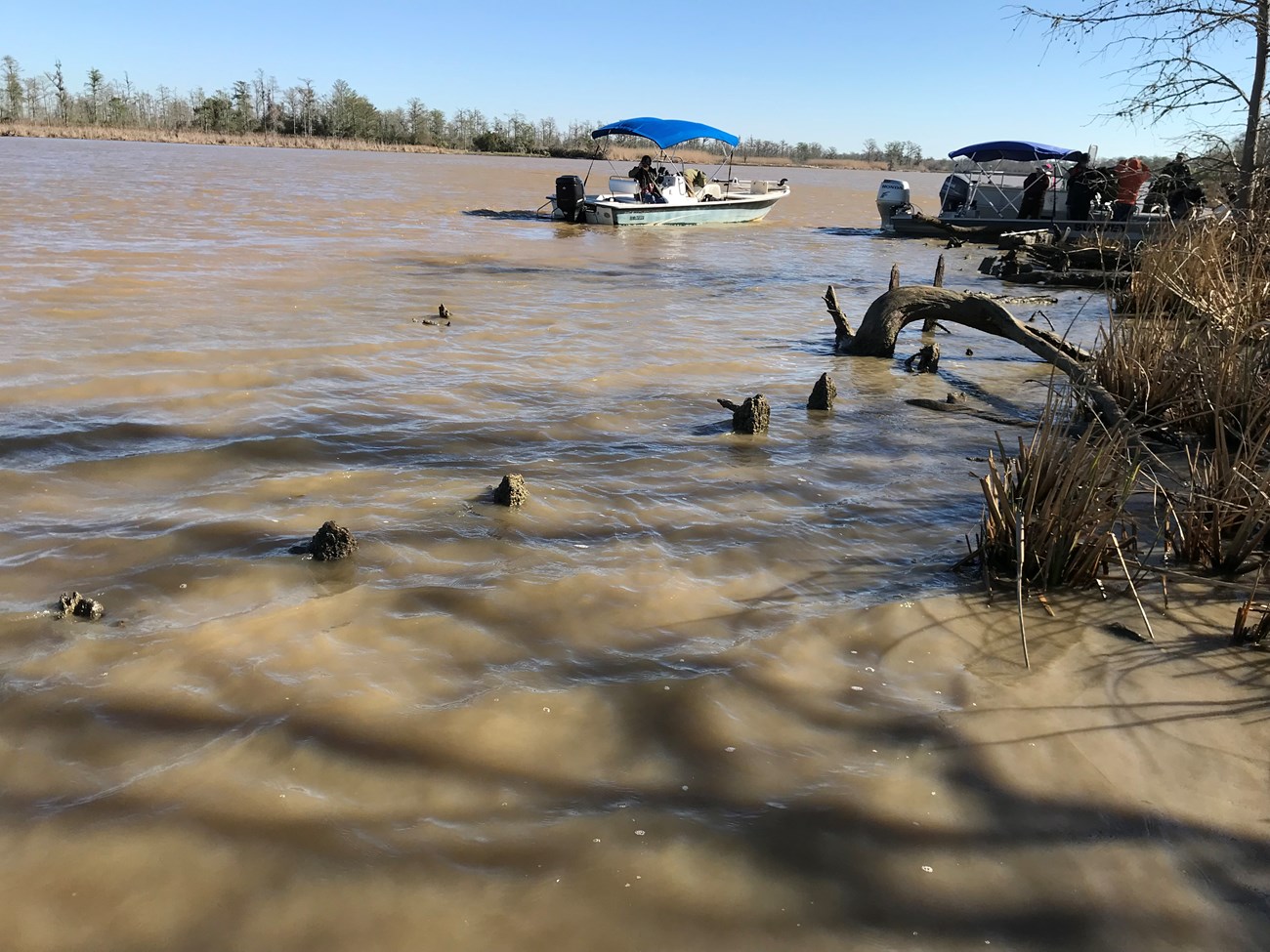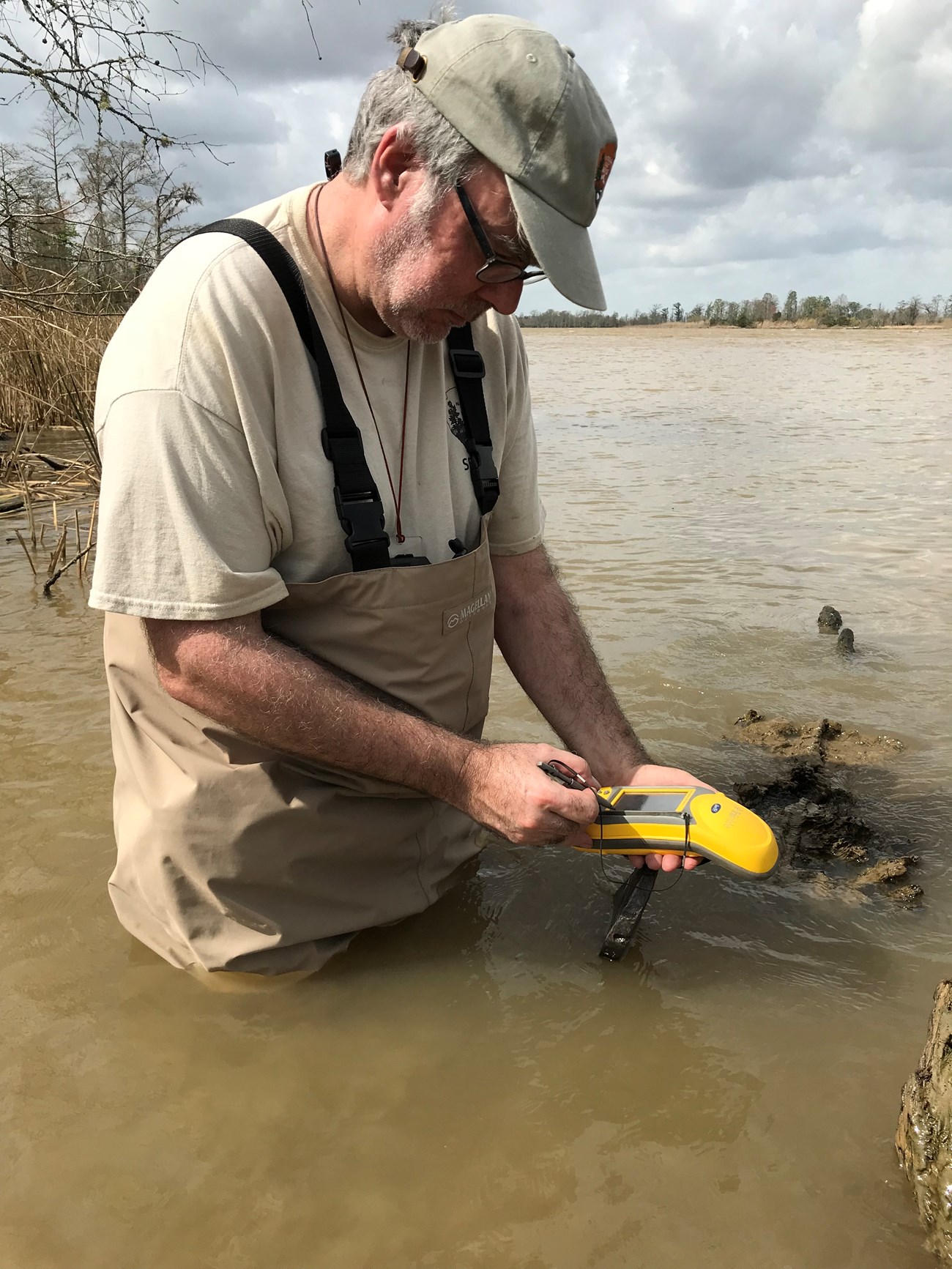Last updated: April 9, 2020
Article
Twelvemile Island Shipwreck

(NPS Photo)
SEAC and the Submerged Resources Center (SRC), in conjunction with the Slave Wrecks Project, were part of a federal, state, university, and private sector team assessing a reporter’s claim that the wreck of the Clotilda - the last known ship to bring enslaved people to the U.S. from Africa -had been discovered near Mobile.
The Slave Wrecks Project (SWP) is an international network of institutions and individuals that investigates the global history and enduring legacies of the transatlantic and domestic slave trades. NPS is a founding member and a global partner of the SWP, along with George Washington University, Diving With A Purpose, Iziko Museums, and the Smithsonian Institution National Museum of African American History and Culture.
Working at the request of the Alabama Historical Commission (AHC), the team examined and documented the wreck, known as the Twelvemile Island Shipwreck Site, using photo documentation, archival research, and GIS. Measured drawings and high precision maps of the wreck were made using GPS and a total station. Based on research and field observations, the team concluded the wreck, while historic, is not that of the Clotilda.
The wreck’s construction and size did not match what is known about Clotilda. The Twelvemile Island Wreck is over 158 feet long, while Clotilda was 86 feet in length. The wood samples have not yet been analyzed, but all of the wood observed on the Twelvemile Island Wreck appears to be soft wood such as pine. Clotilda was built with oak and yellow pine. There was no oak observed on the Twelvemile Island Wreck.

(NPS Photo)
Clotilda represents “a story with profound meaning in Alabama, and especially to the descendant community of Africatown,” said Lisa D. Jones, Executive Director of the AHC. “While the follow up investigation of the Twelvemile Island Wreck has found that this wreck is not Clotilda, its discovery and the attention paid to it will be the start of a renewed effort to find Clotilda.”
Links to other articles:
AL.com NewsAL.com News
SRC link https://www.nps.gov/orgs/1635/index.htm
SWP https://slavewrecksproject.org/

(NPS Photo)
